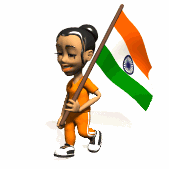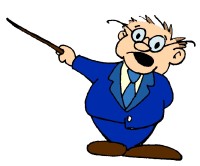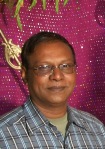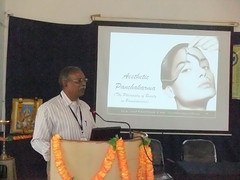Introduction to Evidence Based Panchakarma
TechnoAyurveda Lovers
- 454,847 Visitant You are!
Attention Please

Techno Pages
- 100Qs Allopathy Alternative Aromatherapy Article Astral Astrology AyurAnatomy Magazine Ayurveda Ayurveda Update Bhaishajya Kalpana Career Conceptual Foundations Contemporary Cook Books Cosmology Diabetes Dictionary Discussions Disease Dravyaguna Education Events Exercise Festival Gerontology Hospital-Patient Management Hot Topics Indian Medicine Info Jyotish Kaumara Bhritya Kayachikitsa KSR Prasad Leadership Manas Mano Vijnanam Massage Medical Marvels Meditation Men's Nanoscience Novel Nutrition Obesity Panchakarma Philosophy Phytotherapy Poll Ayurveda Prasuthi Rasa Shastra Rasayana Reflexology Rejuvenation Research Roganidana Samhita Sexology Sexotronics Sexotronics-Sexual Health Shalya Shareera siddhanta Spirituality Swasthavritta technoayurveda Telugu Vagbhata Vajikarana Women World Day Yoga
Past pages
TechnoAyurveda Provides
Get Your CCIM Central Registration Number Here
Accreditation Program for AYUSH Hospitals
Donate Blood ! Save a life !
Indian database of blood donors - Donate Blood ! Save a life !
Click below "Blood Helpers" Logo to Register
Techno Ayurveda Visitors

Disclaimer:
Information presented on this website is a collection from net or presented by the Individuals, considered public information (unless otherwise noted) and may be distributed or copied (unless objected). The information or ideology of the articles placed here are exclusively opinions of individuals. Please note Technoayurveda do not control and cannot guarantee the relevance, timeliness, or accuracy of these materials. No responsibility is taken for any by any means. Technoayurveda reserves the right to block/ remove without notice any content received from users.
Indexed links to content is provided by various sites. Copyright of such books goes to its respective owners and we provide you with free download links of ebooks available in world wide web. This is for educative purpose and comes under fair use. So if there is any complaint regarding books copyright, Contact book hosting servers for the removal of the book rather than us.
Unauthorized attempts to upload information or change information on this website are strictly prohibited and may be punishable under the Computer Fraud and Abuse Act. Kindly do not post any abusive, defamatory, infringing, obscene, indecent, discriminatory or unlawful material or SPAM.-
Join 476 other subscribers
Technoayurveda Blog
Contribute 2 Technoayurveda
Dear friends,
With your interest and Involvement, Techno-Ayurveda became one of “Top 10 Ayurveda Sites”. Introduce your friends and students to Techno-Ayurveda, Ayurveda-Online and Ayurveda Research, to enrich the content and Ayurveda propagation. Now, you can subscribe the site to know the latest entries. I request your involvement further by adding your presentations, papers, photos, videos, discussions, etc - send them for uploading to technoayurveda@gmail.com or technoayurveda@yahoo.com
Thank you & Good Luck.Ayurmitra technoayurveda Dr.K.S.R.Prasad
Technoayurveda Photos
Author Archives: technoayurveda
What They Didnt Teach You at Medical School
 What They Didnt Teach You at Medical School Springer | English | June 6, 2007 | ISBN: 1846284619 | 108 pages | PDF | 2.31 MB
What They Didnt Teach You at Medical School Springer | English | June 6, 2007 | ISBN: 1846284619 | 108 pages | PDF | 2.31 MBDuring medical training there are certain parts of day-to-day tasks that are not taught at medical school nor in the traditional reference books. There are some skills that medical students are expected to learn by ‘osmosis’ while on placement and under the guidance of junior doctors. These skills are never officially taught or examined in medical school. They are, however, a fundamental part of being a safe, good and efficient doctor. This book includes ‘golden rules’ or important points to remember and case examples, both of which are given as displayed extracts.
Normal Fetal Movements
 Alessandra Piontelli, “Development of Normal Fetal Movements: The First 25 Weeks of Gestation” Publisher: Springer | 2010 | ISBN 8847014018 | PDF | 250 pages | 18.8 MB
Alessandra Piontelli, “Development of Normal Fetal Movements: The First 25 Weeks of Gestation” Publisher: Springer | 2010 | ISBN 8847014018 | PDF | 250 pages | 18.8 MBThis work aims to provide a detailed reasoned map of fetal behavior by describing its features and evolution from 10 to 25 weeks gestation. Each behavioral event is described, measured in seconds and presented as it occurs in its natural sequence, thus providing a ‘real-time’ picture of fetal behavior. Links between events become clear, and events are connected to the changing anatomy and physiology of the nervous system and of the fetal body in general. Transient behaviour with its underlying structures and possible functions is carefully distinguished from anticipatory functions heralding post-natal life. Furthermore, phenomena of physiologic significance during prenatal life, but which can acquire pathological connotations for the premature infant having to meet the different requirements of the post-natal environment, are also outlined. Finally, various prenatal ‘myths’ are discussed, in order to give scientific information on issues that are particularly relevant, given the heated pro-life versus pro-choice debate.
Available in the Net as Free Book – Use Search engines to get it
Heart is Brain?
IS IT HRUDAYA (HEART) REFERS TO MASTHISHKA (BRAIN)?
(The organ Hrudaya is refers to organ Mastishka)
- by Dr Giridhar Kanthi Prof and Head
- and Dr Remitha K K. 2nd year P G anatomy
When we generally speaks and asked the question “what is hrudaya” every one keep their hands on the left part of the chest, perhaps even a child would reply as “it is the organ, which located in the thorax region. It continuous receives and gives the blood to the whole parts of the body”. It collects the deoxygenated blood from all over the body and after oxygenation that circulates to the whole body. There are no specific references regarding the swaroopa (anatomical features) and function of the same in Ayurvedic Samhitas.
Most of the time the mind related functions, like happiness (Sukha), sarrowness (Dukha), behaviors, activities, attitude and relations with others etc gunas, are almost related with hrudaya also. So we are speaking his/her hruday is so nice and good. Always he/she has sympathy to others. Most of the time, these questions might arises in our mind, as whether we should have considered only that one organ as hrudaya? The answer is no. download full paper “hridaya”
Gold in semen boosts fertility levels
 “The presence of gold in the body is thought to be a contaminant from environmental elements like sea water. The total human body content of gold is calculated to be 0.1 mg. Gold has been claimed in Ayurvedic texts to have beneficial effect on testicular function and sperm,” Dr Rai said.
“The presence of gold in the body is thought to be a contaminant from environmental elements like sea water. The total human body content of gold is calculated to be 0.1 mg. Gold has been claimed in Ayurvedic texts to have beneficial effect on testicular function and sperm,” Dr Rai said.
The quantity of gold in semen decides the levels of fertility in men with the average healthy level being 0.88 micrograms per ml of seminal fluid. Those with a gold content below 0.10 micrograms per ml fail to produce children.
Though ancient Ayurveda texts link gold with male fertility, it is for the first time that the exact content of gold in semen is studied to determine the fertility levels in men. Doctors from the CSM Medical University in Lucknow have found that semen samples of healthy and fertile men contained gold ranging from 0.36 to 1.98 micrograms per ml with a mean value of 0.88 micrograms per ml.
The doctors used atomic absorption spectrophotometry to determine the content of gold in sperm. The body contains a number of minerals and trace elements including gold. Trace metals in the body are linked to environment pollution, but Ayurveda doctors believe that entry of gold through food or soil contamination is actually good for male fertility. The higher the gold content the higher the fertility levels.
“Whatever amount of gold is detected denotes the levels in seminal plasma as well as the sperm itself,” said Dr Anurag Rai, one of the researchers. The presence of gold in sperm supports the ancient Ayurvedic texts which link male fertility with gold, though a thorough scientific analysis is yet to be made. Gold was found in all the semen samples collected for the study. [source]
JDBTE call for papers
The Journal of Developmental Biology and Tissue Engineering (JDBTE) is a multidisciplinary peer-reviewed journal published monthly by Academic Journals (www.academicjournals.org/JDBTE ).JDBTE is dedicated to increasing the depth of research across all areas of this subject.
JDBTE welcomes the submission of manuscripts that meet the general criteria of significance and scientific excellence in this subject area, and will publish:
- · Original articles in basic and applied research
- · Case studies
- · Critical reviews, surveys, opinions, commentaries and essays
We invite you to submit your manuscript(s) to jdbte.journal@gmail.com for publication. Our objective is to inform authors of the decision on their manuscript(s) within four weeks of submission. Following acceptance, a paper will normally be published in the next issue. Instruction for authors and other details are available on our website;http://www.academicjournals.org/JDBTE/Instruction.htm
Editors and reviewers
JDBTE is seeking qualified researchers to join its editorial team as editors, subeditors or reviewers. Kindly send your resume to jdbte.journal@gmail.com .
JDBTE is an Open Access Journal
- One key request of researchers across the world is unrestricted access to research publications.Open access gives a worldwide audience larger than that of any subscription-based journal ad thus increases the visibility and impact of published work. It also enhances indexing, retrieval power and eliminates the need for permissions to reproduce and distribute content. JDBTE is fully committed to the Open Access Initiative and will provide free access to all articles as soon as they are published.
Best regards,
- Emebane Excel
- Editorial Assistant
- Journal of Developmental Biology and Tissue Engineering (JDBTE)
- E-mail: jdbte.journal@gmail.com
- www.academicjournals.org/JDBTE
Birth Chart Interpretation
 Stephen Arroyo, Jerilynn Marshall, “Chart Interpretation Handbook: Guidelines for Understanding the Essentials of the Birth Chart ” CRCS Publications | 1990 | ISBN: 0916360490 | 181 pages | PDF | 5,3 MB
Stephen Arroyo, Jerilynn Marshall, “Chart Interpretation Handbook: Guidelines for Understanding the Essentials of the Birth Chart ” CRCS Publications | 1990 | ISBN: 0916360490 | 181 pages | PDF | 5,3 MBThis book contains mainly keywords and general directions to guide the reader what the planets, signs, houses and aspects mean in a broader sense. It may give novices introduction to astrology, but more advanced readers may not find the contents adequate for birth chart interpretation.
Thousands of readers worldwide have found personal meaning in Arroyo’s bestselling books. Here, he shows how to develop reliable, in-depth interpretations for any birth chart.
Ayurveda doctor to dissect his father’s body in India
A doctor in India is steadying his nerves to dissect his father’s embalmed body to help anatomy students’ research at a medical college.
- The operation in the southern state of Karnataka is said to be the first such case in India.
- Dr Mahantesh Ramannavar told the BBC that the task was challenging but he had no choice.
- His father, who fought against British colonial rule, was a renowned ayurvedic (traditional medicine) doctor.
- He died two years ago, aged 89, and stipulated in his will that his corpse should be cut open by his doctor son for medical research.
Better science
Dr Mahantesh, 40, will fulfil his father’s wishes at the Kankanwadi Ayurved medical college in Belgaum, 550km (342 miles) north of Bangalore, on the second anniversary of his death on 13 November.
 Before his death, [my father] had mentally prepared me to take up the dissection of his body”
Before his death, [my father] had mentally prepared me to take up the dissection of his body”- He said that he was inspired by the English physician William Harvey, famed for his research into the human circulatory system.
- Mr Harvey is credited with dissecting the body of his sister in his pursuit of better medical science.
- “I hope my gesture will help others to donate bodies. This is a message I want to convey to the world,” Dr Mahantesh told the BBC.
- There is a growing demand for cadavers for medical research and training across the globe.
- In front of his father’s body, he has been briefing students without much fuss.
- “Whatever emotions I have, I control them,” he said.
- His said that his decision had not upset his mother and family members.
- “There is no opposition from my family. They are supporting me. This is because this is what he willed,” he said.
- Dr Mahantesh said the demand for cadavers was up but donors were hard to come by.
- India passed the Human Organ Transplant Act in 1994, making it possible to receive transplants from brain dead donors, but for a country with a population of more than one billion people, it lags behind in the implementation of a cadaveric donation programme.
- Officials say there is need for greater public awareness to enable people to donate bodies.
- Dr Mahantesh said that his father had always spoken in support of cadaver donations.
- “Before his death, he had mentally prepared me to take up the dissection of his body,” he said.
- The family has set up a trust in his name for cadaver donations.
- “All my family members have written wills to donate their bodies,” he said. [source]
ಡಾ. ಮಹಾಂತೇಶ ರಾಮಣ್ಣವರ ಭೈಲಹೊಂಗಲ, ಇವರು ನನ್ನ ಅಧ್ಯಾಪಕ ವೃತ್ತಿಯಲ್ಲಿ ಶರೀರ ಶಾಸ್ತ್ರ ವಿಭಾಗದ ಪ್ರಥಮ ಸ್ನಾತಕೊತ್ತರ ವಿದ್ಯಾರ್ಥಿಯಂದು ಹೆಳಲು ಅತ್ಯಂತ ಹೆಮ್ಮೆಯ ವಿಷಯವಾಗುತ್ತದೆ, ಎಸ್. ಡಿ. ಎಮ್. ಆಯುರ್ವೇದ ಕಾಲೇಜಿನ ಸ್ನಾತಕೊತ್ತರ ಶರೀರ ಶಾಸ್ತ್ರ ವಿಭಾಗದ ಕೀರ್ತಿಯನ್ನು ಪ್ರಪಂಚಕ್ಕೆ ಅರಿವು ಮಾಡಿರುತ್ತರೆ. ಧರ್ಮಸ್ಥಳದ ಧರ್ಮಾಧಿಕಾರಿ ಹಾಗೂ ಎಸ್ ಡಿ ಎಮ್ ಸಂಸ್ಥೆಯ ಅಧ್ಯಕ್ಷರು ಆಗಿರುವ ಡಾ. ಡಿ ವಿರೇಂದ್ರ ಹೆಗ್ಗಡೆಯವರು, ಡಾ. ಮಹಾಂತೇಶ ರಾಮಣ್ಣವರ ಮನೋಸ್ಥೈರ್ಯವನ್ನು ಮೆಚ್ಚಿ ಈ ಸಂದರ್ಬದಲ್ಲಿ ಶುಭ ಹಾರೈಸಿರುತ್ತಾರೆ. ಮಗ ತಂದೆಯ ಶರೀರವನ್ನು ಅದಾರವಾಗಿಟ್ಟುಕೊಂಡು ವೈಧ್ಯಕೀಯ ವಿಧ್ಯಾರ್ಥಿಗಳಿಗೆ ಭೊದಿಸುವದು ವೈಧ್ಯಕಿಯ ಇತಿಹಾಸದ ಪುಟದಲ್ಲಿ ಸೆರ್ಪಡೆ ಗೊಳ್ಳುವದರಲ್ಲಿ ಯಾವ ಶಂಸಯವು ಇಲ್ಲವೆಂದು ಹೆಳಲು ಆತನ ಗುರುವಾದ ನನಗೆ ಹೆಮ್ಮೆಯನಿಸುತ್ತದೆ. ಇಂತಹ ಸಾಹಸ ಕಾರ್ಯಾವನ್ನು ಮಾಡುವ ಡಾ. ಮಹಾಂತೇಶ ರಾಮಣ್ಣನ್ನವರ ದೃಡ ಮನೊ ನಿರ್ಧಾರವನ್ನು ನೊಡಿದರೆ, ಆಯುರ್ವೇದ ವೈಧ್ಯಕೀಯ ಶಾಸ್ತ್ರದಲ್ಲಿ ಆಚಾರ್ಯರರು ಹೆಳಿದ ಮಾನಸಿಕ ಶಾರೀರರದ ಕಲ್ಪನೆಗೆ ಡಾ. ಮಹಾಂತೇಶರವರು ಉದಾಹರಣೆಯಾಗುತಾರೆ. ಏಕ ಧಾತುಜ ಪುರುಷ ಎಂದರೆ ಕೇವಲ ಆತ್ಮ ಮಾತ್ರ, ಷಡ್ ದಾತುಜ ಪುರುಷನೆಂದರೆ ಪಾಂಚಬೌತಿಕಗಳಿಂದ ಕೂಡಿದ ಶರೀರ. ಆತ್ಮನಿಂದ ದೂರಾಗಿರುವ ತಂದೆಯ ಶರೀರವನ್ನು ಆತ್ಮನಿಂದ ಕೂಡಿರುವ ಮಗನಾಗಿರುವ ಡಾ. ಮಹಾಂತೇಶರವರು ವೈಧ್ಯಕೀಯ ಹಿತಿಹಾಸದಲ್ಲಿ ಮಾಡುತ್ತಿರುವ ಅತ್ಯಂತ ಸಾಹಸಮಯವಾದ ಕಾರ್ಯವಾಗಿರುತ್ತದೆ. ಆತನ ಈ ಕಾರ್ಯವು ಯಶಸ್ಸುಗೊಳ್ಳಲಿಯಂದು ಹಾಗೂ ಸಹಕರಿಸಿದ ಅತನ ಕುಟುಂಬದ ಎಲ್ಲ ಸದಸ್ಯ್ರರಿಗೂ ಈ ಸಂದರ್ಭದಲ್ಲಿ ಎಸ್.ಡಿ ಎಮ್. ಆಯುರ್ವೇದ ಕಾಲೇಜಿನ ಪ್ರಾಂಶುಪಾಲರು ಮತ್ತು ಗುರುಗಳಾದ ನಾವುಗಳು ಶುಭ ಹರೈಸುತ್ತೇವೆ. – ಡಾ. ಗಿರಿಧರ್ ಎಂ ಕಂಠಿ. ಪ್ರಾಧ್ಯಪಕರು, ಎಸ್. ಡಿ. ಎಮ್ ಆಯುರ್ವೇದ ಕಾಲೇಜು, ಕುತ್ಪಾಡಿ, – ಉದ್ಯಾವರ, ಉಡುಪಿ – ೫೭೪ ೧೧೮ – ಉಡುಪಿ ಜಿಲ್ಹೆ


























